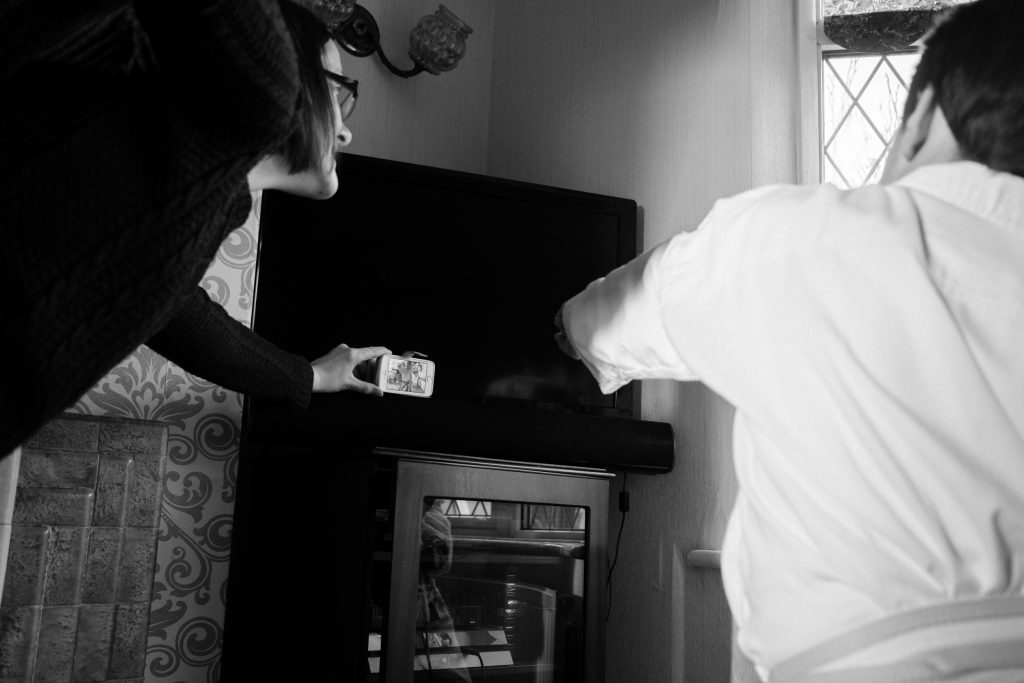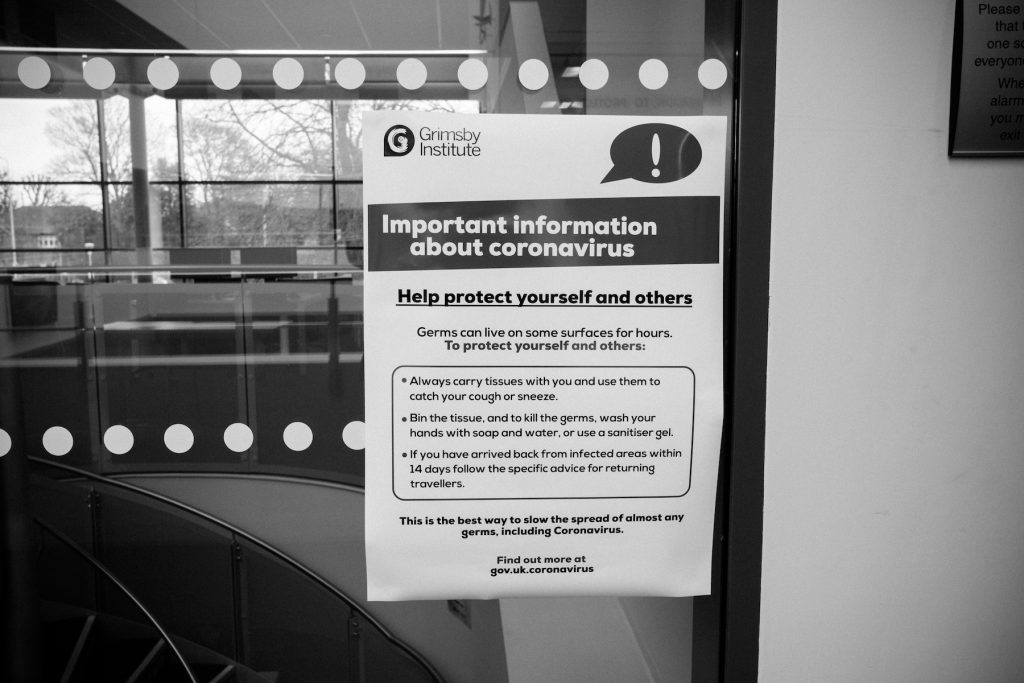Or; an utterly non-definitive list of films that may be relevant to the current lockdown.
(Though currently, the opening sequence from Sergio Leone’s Once Upon a Time in the West, 1968, feels like the perfect metaphor for everything.)
Where possible, I’ve included in my suggestions links to where films may currently be available on streaming platforms in the UK, for ease of access.
The Seventh Seal (Ingmar Bergman, 1957)
‘One has to make a living, at least until the plague claims you’.
Bergman’s tragic-comic tale of the encounter between a knight, Antonius Block (Max Von Sydow), returning from the Crusades and Death himself, during an era in which the plague is ripping through Europe, has a lofty reputation and first-time viewers are often surprised to discover that is incredibly watchable.
Beginning with Block challenging Death to a game of chess (‘The condition is, I live as long as I resist you. If I conquer you, you free me’), the story broadens in scope to paint a picture of various facets of medieval society, teased out and amplified by the constant threat of the plague: a traveling troupe of performers who, out of economic need, must still travel from place to place and perform amidst the spread of the plague; a presumed witch sentenced to be burnt at the stake by a group of religious zealots. Throughout, Bergman returns to the ongoing chess game between Block and Death, using this as a metaphor for life itself. The film also benefits from superb black and white photography by cinematographer Gunnar Fischer.
The Seventh Seal is by turns deeply tragic and incredibly funny, Bergman’s control of the material exemplary; and it’s easy to see why, and how, he became one of the greatest filmmakers in cinema history.
(Available on the BFI Player and on Amazon.)
Chinese Roulette (Rainer Werner Fassbinder, 1976)
‘What would this person be in the Third Reich?’
This strange little film from the inimitable German filmmaker Rainer Werner Fassbinder sees a married couple, the parents of a polio-stricken daughter, retreating to a country house with their respective extramarital lovers – accompanied by their maid, her pretentious and sexually ambiguous son, the daughter and her nurse. In their own ‘lockdown’ in this isolated villa, this group’s multiple antagonisms reach a climax in some incredible verbal fireworks and emotional cruelty during a game of ‘Chinese roulette’ (which Fassbinder himself was known to play during parties). In Fassbinder’s world, every relationship is a battleground and every conversation is a firefight.
The photography, with a prowling camera and obtuse compositions, makes the most of the limited space, and the sense of claustrophobia is amplified by weird electronic doodlings on the soundtrack.
(Available to watch on the BFI Player and Amazon.)
Seeds (Andy Milligan, 1968)
‘It’s all in the family’.
A misanthrope whose anti-human sensibilites are deliriously documented in Jimmy McDonough’s superb 2001 biography The Ghastly One, Andy Milligan made Seeds in ’68, a year of cultural turmoil across the globe. Milligan had little interest in the mechanics of cinema: he was primarily fascinated by the theatre. This shows in his films, which are often photographed in a seemingly haphazard way and incredibly rough around the edges – but this arguably adds to their nihilistic charm.
Seeds focuses on a crippled, alcoholic matriarch who gathers her various family members together over Christmas. In this isolated house, the guests are murdered one by one by an unseen assailant. However, the mystery plot is secondary to the incredible verbal cruelty and utterly insane tantrums that the various characters throw, the cruel matriarch taking delight in humiliating her various family members. Women are predatory; sex is a bargaining chip, used as a tool to create coercion or to achieve dominance. Seduction turns to violence and vice versa; sex and brutality are virtually indistinguishable. The characters run the gamut: a maniacal youth, thrown out of school; a fickle priest who is far from devoted to the cloth; incestuous siblings who play games with one another and their lovers.
The distributors recut the film, retitling it Seeds of Sin, inserting some explicit footage and turning it into a sex picture, in the process damaging the flow of Milligan’s narrative. However, these added sex scenes jar wildly with the main thrust (if you’ll pardon the pun) of the film: Milligan’s films are generally anti-sex, representing coitus as degrading and filthy. Milligan’s original cut has since been reconstructed and is available on an excellent Blu-ray release from Vinegar Syndrome in the States.
(The film is available in its entirety on Youtube.)
Shoot the Living and Pray for the Dead (Giuseppe Vari, 1971)
‘Now you can’t buy anything with your money’.
Giuseppe Vari’s Shoot the Living and Pray for the Dead (Prega il Morto e Ammazza il Vivo) came relatively late in the evolution of the western all’italiana/Spaghetti Western – certainly at the fag end of its boom period, during an era in which filmmakers were trying to imbue the Euro-Western with something ‘new’. Shoot the Living‘s ‘gimmick’ is its open fascination with the paradigms of post-war films noir and, particularly, John Huston’s stonking Key Largo (1948), which was a clear influence on the script for Vari’s picture.
Taking place almost entirely within a stagecoach station in which tensions simmer and allegiances shift, Shoot the Living and Pray for the Dead features a typically stoic performance from Klaus Kinski in the main role. The film is played out largely in tense close-ups of the actor’s faces; the script is quiet, resorting to gunplay only when necessary. The minimalism in the locations is amplified by some inventive photography. (It deserves to be seen B-I-G, not on a small screen; and if you’re watching fillums on a mobile device, what kind of Philistine are you?)
(The film is available to watch in is entirety on Youtube.)
Salo, or the 120 Days of Sodom (Pier Paolo Pasolini, 1975)
‘It is when I see others degraded that I rejoice knowing it is better to be me than the scum of the people. Whenever men are equal […] happiness cannot exist [….] In all the world no voluptuousness flatters the senses more than social privilege’.
Pasolini’s notoriously challenging and often-banned last film, Salo revolves around a group of degenerate fascists, representatives of the ruling classes, who take the concept of ‘working from home’ to its extreme in the final days of the Second World War by retreating to a villa near the small town of Salo (the location of Mussolini’s headquarters). Once there, in their own self-imposed ‘lockdown’ as their regime crumbles outside, they subject a group of young people to a catalogue of abuse. Pasolini’s film is a denouncement of power and the manner in which it turns its Other into a commodity to be exploited through labour, divided and turned upon one another, and used and abused for the benefit of the senses and desires of the privileged.
Salo is based on the Marquis de Sade’s The 120 Days of Sodom, a book whose notoriety disguises the fact that most commentators seem not to have read it. An incomplete manuscript, de Sade’s book is a litany of cruelties. Pasolini also took inspiration from Dante’s Divine Comedy, in terms of the four segments of the film (Antinferno, Circle of Manias, Circle of Shit, Circle of Blood). It’s a perenially relevant film; wherever there is inequality, Salo will continue to resonate.
(A pretty solid Blu-ray release is available from the BFI.)
Citizen Kane (Orson Welles, 1941)
‘Don’t believe everything you hear on the radio’.
Charles Foster Kane practised self-isolation and social distancing before all the cool kids did it.
A savage critique of the power of the press, Orson Welles’ Citizen Kane is both astonishing on a technical level – from the opening montage to the deep focus photography and extreme long takes when Kane retires to Xanadu – and also seems increasingly relevant as the years pass. Based on the life of William Randolph Hearst, at the heart of the film is a veiled Faustian pact: Kane’s wealth and power comes at the cost of his family. It’s a deal that impacts on his humanity. (Welles had of course directed and starred in the celebrated 1937 staging of Christopher Marlowe’s play Doctor Faustus.)
(Available for rental on Amazon.)
The Thing (John Carpenter, 1982)
‘Trust’s a tough thing to come by these days’.
If you’re trapped in a house with your family and they are driving you up the proverbial wall, you will find much to connect with in Carpenter’s film about a shapeshifting alien-as-virus that rips through an Antarctic research station, shattering trust and instilling paranoia.
A remake of Howard Hawks/Christian Nyby’s 1951 The Thing from Another World (or, rather, a closer adaptation of its source novella, J W Campbell Jr’s striking Who Goes There? from 1938), Carpenter’s film is graced with some beautifully-lit and composed widescreen photography by Dean Cundey. The film is also anchored by a decidedly lowkey performance from Kurt Russell as the story’s taciturn and reluctant hero, R J MacReady. ‘I just want to go up to my shack and get drunk’, indeed.
(Available for rental on Amazon.)



















